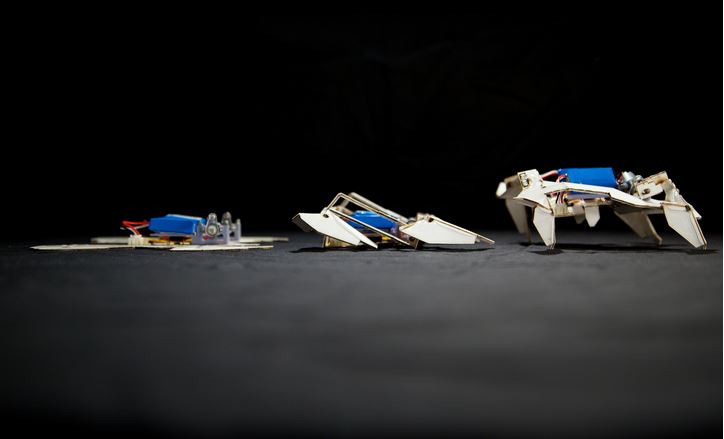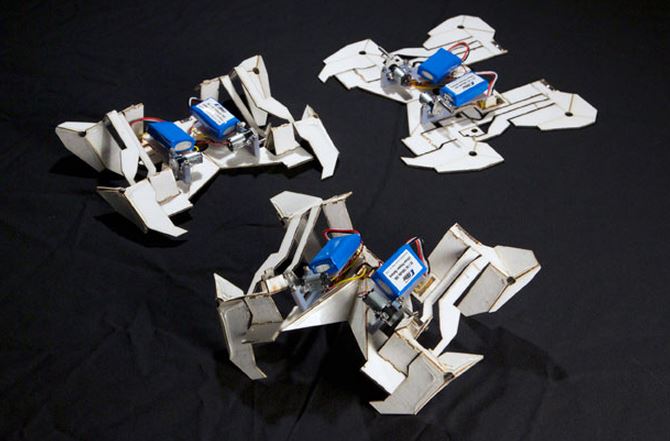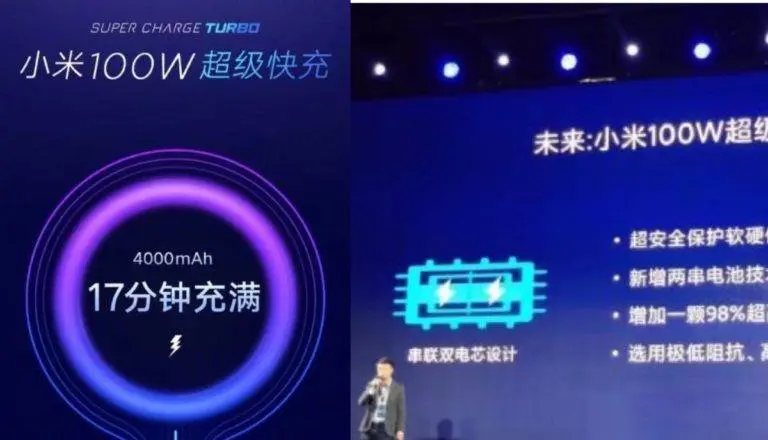Rise of the Self-Folding Robot With Origami

 Origami is a traditional Japanese art form of paper folding which was started in the 17th century. It is widely popular because it can transform a flat sheet of paper into a finished structure through simple folding. Interestingly, the number of folds is usually small but this art form can be used to create many intricate and complex designs.
Origami is a traditional Japanese art form of paper folding which was started in the 17th century. It is widely popular because it can transform a flat sheet of paper into a finished structure through simple folding. Interestingly, the number of folds is usually small but this art form can be used to create many intricate and complex designs.
The scientists have been trying hard to create robots can self-assemble. They achieved the long-awaited milestone when the engineers at Harvard and MIT have developed self-assembling robots inspired by origami. According to the team, the machine begins as a flat sheet of material, and using the technique of origami, it folds itself into a 3-D robot capable of walking and working without any sort of human assistance in just 4 minutes.
The team used computer design tools to create the self-folding robot from a flat three-layered sheet. The very first sheet is paper, the second one is a flexible electronic circuit, and the last one is the shape memory polymer. The sheet is fitted with motors and circuitry. In the sheet, thereafter, the engineers made slices or hinges along which folding is carried out. Each hinge is programmed to fold at specific angles and consists of tiny circuits that heat up on command to move the robot’s limbs. Software named Origamizer is used to specify where the fold needs to be.
Also read: Learn How to Program Robots for Free. Anyone, Anywhere, Anytime
About 4 minutes after the assembly, the self-folding robot’s hinges cool down enough to set hard and the robot’s microcontroller sends signals to the robot’s legs commanding them to walk. The self-folding robot has a built-in timer that allows it to start folding itself into the shape just after 10 seconds from when its batteries have been fitted.
These robots can walk at a speed of around 5 cm per second. These self-folding robot cost about $100 to make one. They are about six inches long, six inches wide, and about two inches tall. They weigh even less than three ounces (85gm). The team says that the robots can be even made bigger or smaller but with a few limitations.
These are said to resemble the robots in the science fiction movie “TRANSFORMERS”, but these robots can’t arrange themselves into cars or helicopters. These are just simple self-folding robot but they can be of great significance in the coming future. It is believed that this would drastically reduce the cost of production and also facilitate some unique use-cases. These small sized, yet lightweight, robots could be used to explore outer space and other dangerous environments on earth which may be unfit for human survival; they can easily get into cramped places for search and rescue missions which means that they are of great help to humans.
Watch the video of self-folding robot below:
Did you like this contribution of origami to the robotics?
For keeping a roving eye on technological and scientific advancements and updates, keep reading fossBytes!







